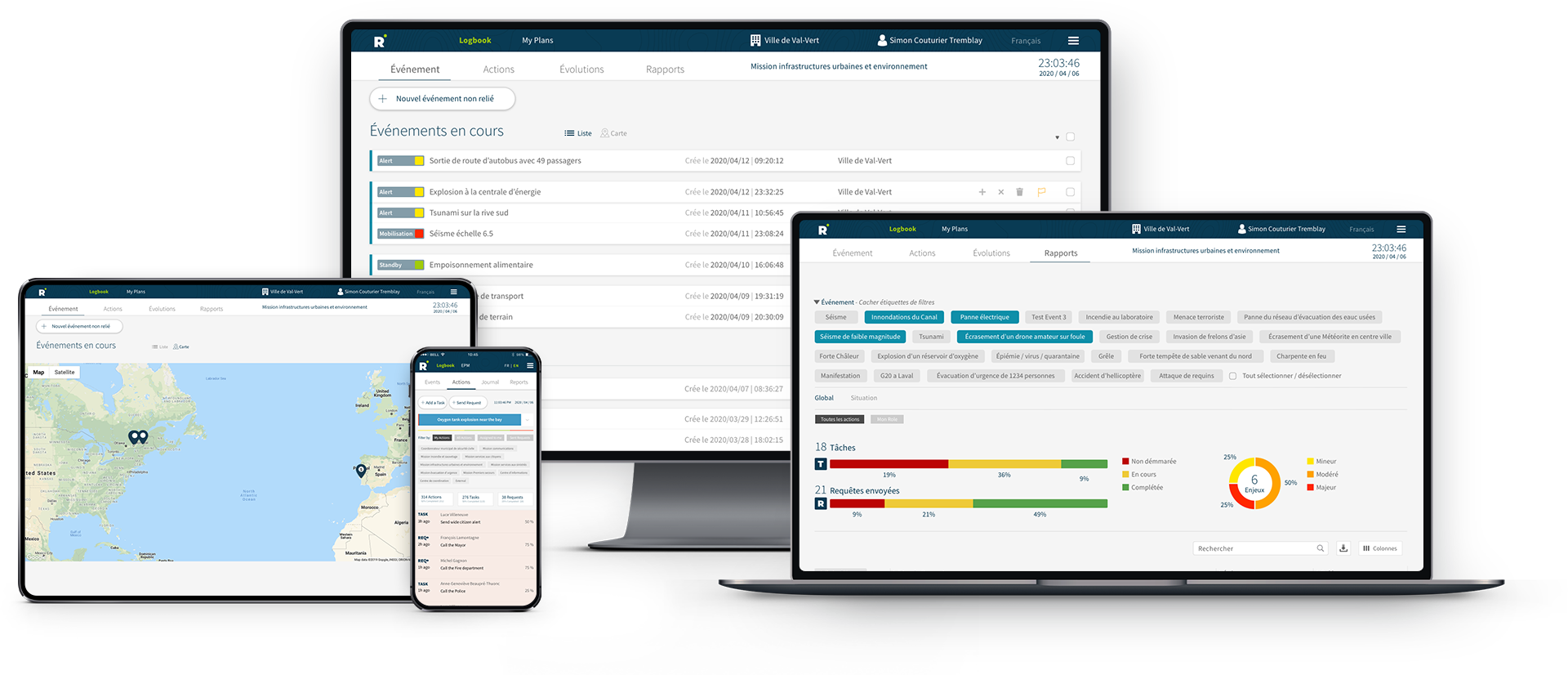The Content Manager: a solution for optimizing the maintenance of resilience plans
In today’s dynamic and often unpredictable world, effective management of emergency and resilience plans is crucial for any organization.
However, many organizations face major challenges such as the durability, accessibility and updating of their essential plans and data, which are all too often scattered and unstructured.
This data is often under-utilized and obsolete, requiring a more strategic and modern approach, such as advanced content management.
Why are these plans often under-utilized and obsolete?
Contingency plans are vital to an organization’s safety and responsiveness in the event of a crisis. Yet they quickly become outdated due to the changing nature of threats and organizations.
What’s more, updating these plans in text or spreadsheet format can be tedious and time-consuming, often involving manual manipulation of numerous files and coordination between multiple departments and stakeholders.
The 10 impacts of an advanced content manager for an organization
A content manager can transform the way organizations manage their emergency and resilience plans.
Here are a few key benefits:
1- Data centralization: By gathering all relevant information in one place, an advanced content manager facilitates rapid access to emergency plans, procedures, contacts and other critical resources. This centralization ensures that, in the event of a crisis, responders can quickly find the information they need, without wasting precious time searching through multiple systems, folders or files.
2-Structuring and categorization: Such a system enables data to be structured in a logical way, often using taxonomies, categories and metadata. For example, plans can be classified by plan or event type, or any other relevant criterion, making search and retrieval of specific data much faster and more efficient.
3-Access and version control: Allows you to manage who can access which data, and track changes to plan content. Version control and approval functions ensure that everyone is working on the most recent version of a plan, while retaining a history of previous versions for reference.
4-Advanced search: With advanced search functions, users can quickly find the information they need, even if it’s buried in large volumes of data. This includes keyword searches.
5-Easy updating: With intuitive editing tools and a user-friendly interface, updates can be carried out quickly and efficiently. This reduces the time and effort needed to keep plans up to date.
6-Real-time updates: Emergency situations evolve rapidly, and information needs to be updated accordingly. An advanced content manager enables real-time updates, ensuring that everyone has access to the latest information. This is essential for a coordinated and effective response.
7-Security and compliance: Modern content managers, such as REZILIO’s, offer advanced security and compliance features, ensuring that sensitive data is protected and that the organization complies with regulatory standards.
8-Planning and scripting: The manager enables the creation and storage of a variety of crisis and resilience scenarios, helping organizations to prepare for a wide range of event situations. This includes resource planning, task allocation and the definition of action protocols.
9-Collaboration and data sharing: By facilitating collaboration and data sharing between different departments and external parties (such as emergency services), an advanced content manager enables a more integrated and coherent crisis response, and faster intervention by emergency responders.
10-Analysis and feedback: After a crisis, it’s important to analyze the response to identify areas for improvement. A content manager can therefore collect data on the crisis response, enabling post-event analysis to improve future plans.
How to implement an advanced content manager?
Implementing an advanced content management system such as REZILIO requires careful planning. It is essential to choose a system that aligns with the specific and adaptable needs of your organization. Appropriate training for staff is also crucial to ensure successful adoption.
In conclusion
An advanced content manager such as the REZILIO solution is not just an information storage tool; it is an integral platform that strengthens an organization’s preparation, communication, training and response to crises, transforming the way it manages crises and significantly improving its response capabilities. It enables you to move from static management (files and binders) to dynamic, intelligent content management – and quickly.
Adopting an advanced content management system is a fundamental step towards improving the management of emergency plans and the resilience of an organization.
By making these plans and data more accessible, up-to-date and secure, organizations can not only respond more effectively to crises, but also anticipate and prevent potential threats to which they may be exposed.
Ultimately, such investment in content management technology is not just a precautionary measure, it’s a proactive strategy to ensure organizational resilience and longevity.





